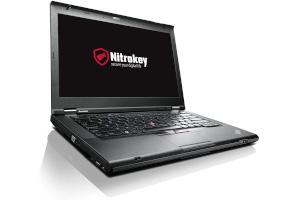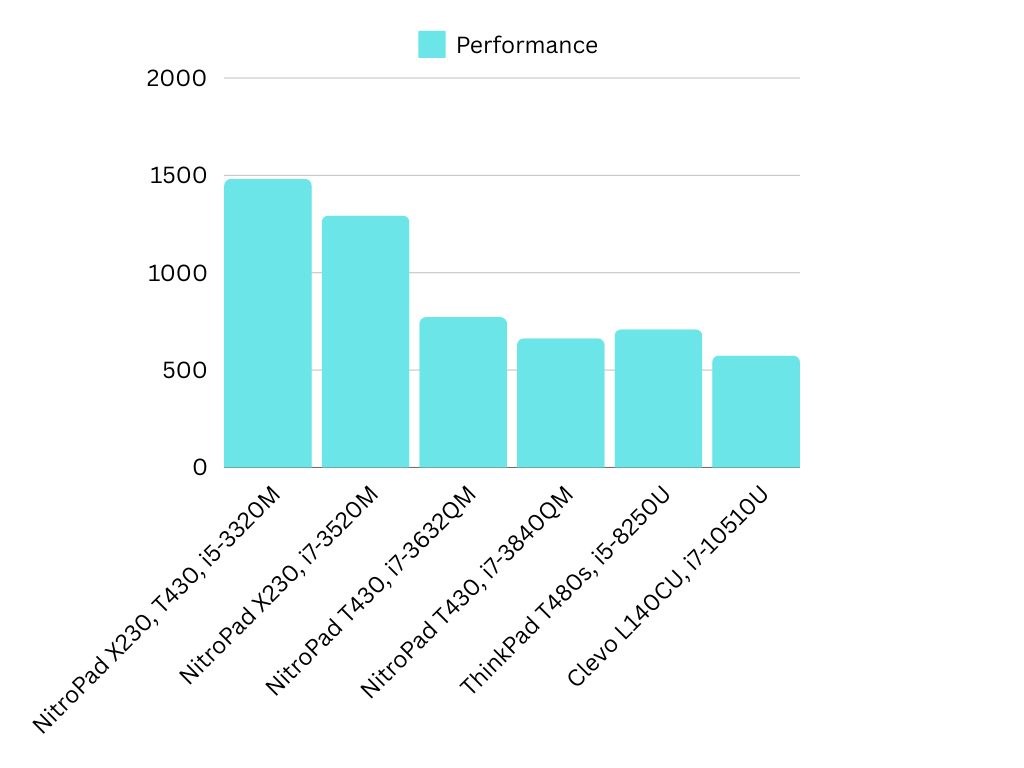Benchmark: Popular NitroPads X230, T430 Keep up With Newer Computers

We released our first NitroPad in 2020. Since then, the popular ThinkPads T430 and X230 have formed the basis for our NitroPads T430 and X230. Despite their advanced age, the computers can easily keep up with more recent models in our office in a benchmark. This confirms our everyday experience: the NitroPads are not only secure, but also solid workhorses. (We also offer the NitroPad V54 and V56, which are cutting-edge models, but are not the subject of this article).
There is a simple reason for this: The NitroPads are equipped with Ivy Bridge processors from Intel, which carry the M suffix. In contrast to the Intel processors with the U suffix (ultra-low power), these offer significantly more speed, but with higher energy requirements (35 watts TDP). The NitroPads therefore leave much newer devices behind.
Accordingly, office or programming work can be carried out effortlessly on the computers. The same applies to surfing the Internet or streaming video. Even working with virtual machines or compiling small programs is possible. However, similar to most business laptops, they have to be used for particularly demanding tasks such as video editing or gaming at a certain point.
To get a rough performance comparison, we ran a benchmark with the 3D graphics suite Blender v2.83 on our NitroPads and various more recent laptops. These had to render the BMW27 test graphics from Blender.org for us using the processor (not the graphics card). The faster the processors can render the graphics, the faster the respective computer is.
The NitroPads can keep up with the benchmark
As expected, the fastest NitroPads were the T430 models with a quad-core processor. The two quad-core i7-3840QM and i7-3632QM rendered the image in 663 and 772 seconds respectively.
In comparison, a ThinkPad T480s with an i5-8250U needed 710 seconds with its four cores. Despite the five device and processor generations in between, our fastest NitroPad leaves the computer just behind.
Only a laptop (Clevo L140CU) with the 10th processor generation from Intel (Comet Lake), an i7-10510U, overtook our fastest NitroPad. It took 575 seconds to render the image.
As expected, the dual-core models could not keep up with the quad-core models. Our NitroPad with i7-3520M needed 1294 seconds to render the image, while the i5-3320M completed the task in 1402 seconds. Nevertheless, these devices have not let us down in the office and can still be used for everyday tasks without any problems.

Our benchmark impressively illustrates that speed cannot be deduced from age or processor generation alone. In the case of the NitroPads, the processors with the M suffix ultimately ensure that they can still easily keep up with more recent devices - even if there are several years and processor generations between them.
In addition, the firmware Heads we use for these models requires almost no proprietary binary blocks, which increases security and transparency. The laptops are robust and easy to repair. For all these reasons, these laptops continue to have a real fan base. In any case, the NitroPads X230 and T430 offer sufficient performance as secondary devices for safety-critical tasks, as well as replacement devices and for traveling.
Comments
Add new comment